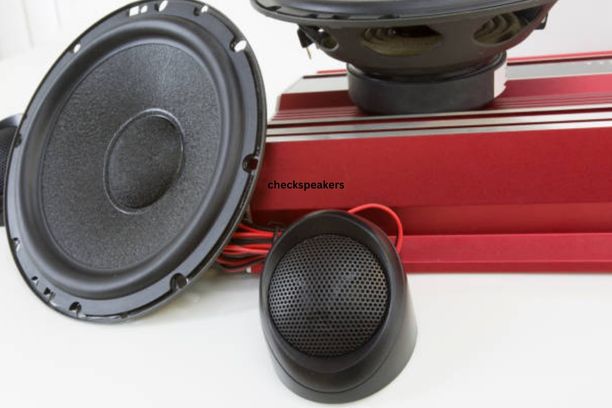Surround sound is a technology and product category that aims to provide an immersive audio experience by creating sound from multiple directions, angles, and heights. It establishes a surround-sound environment, making you feel like you’re in the middle of the action.
The Complete Guide to Surround Sound?

In this article, we will explore the technology and advancements behind surround sound, explicitly focusing on Dolby Atmos, one of today’s most advanced and widely used surround sound formats. We will discuss the history of surround sound, how Dolby Atmos works, and the technologies that have led us to the current state of the art.
Additionally, we will provide you with all the information you need to know to set up a home theatre system that utilizes Dolby Atmos and other surround sound technologies, including links to more specific guides and resources. So, let’s dive into the world of Dolby Atmos and surround sound.
Immersive audio:

Surround sound is an immersive audio experience that creates sound from multiple directions, angles, and heights, making you feel like you’re in the middle of the action. Whether overseeing a movie, recreating a video game, or hearing to music, surround sound can enhance your experience and make it more realistic.
The Complete Guide to Surround Sound is a comprehensive guide to the technology and products behind surround sound. In this direction, we will examine how surround sound works, the different types of surround sound formats, the various components that make up a surround sound system, and how to set up and configure a surround sound system for the best possible audio experience.
First, surround sound format was developed:

Surround sound technology has come a long way since its inception. The first surround sound format developed in the 1930s was “Fantasound.” It was used in the movie “Fantasia” and required a multi-channel audio setup with multiple speakers in a theatre. Surround sound technology is much more advanced and can be found in many different forms, including movie theatres, home theatres, and even headphones.
The most common surround sound format is 5.1 channel surround sound, which consists of five full-range speakers (left, centre, right, left surround, and right surround) and one subwoofer. The subwoofer reproduces low-frequency sounds, such as bass and explosions, while the other five speakers reproduce higher-frequency sounds.
Another popular surround sound format is 7.1 channel surround sound, which adds two additional speakers (left rear and right rear) for even more immersive audio.
Dolby Atmos and DTS: X

In complement to traditional surround sound formats, there are also newer surround sound technologies such as Dolby Atmos and DTS: X. These technologies use multiple speakers placed in different locations in a room to create a 3D soundstage, where sounds can be heard from above, in addition to the traditional left, right, and centre channels.
This creates a more realistic and immersive audio experience, as the sound can be heard from all around the room, making it feel like it is coming from all directions.
You will need critical components to set up a surround sound system. The first component is an AV receiver or preamp, responsible for processing and sending the audio signal to the speakers. You will also need a set of speakers, including floor-standing speakers, bookshelf speakers, and in-wall or in-ceiling speakers. A subwoofer is typically included in a surround sound system, reproducing low-frequency sounds.
Correct locations:

When configuring your surround sound system, placing the speakers in the correct locations is vital. The centre channel speaker should be placed in the centre of the room, directly in front of the listener. The left and right speakers should be positioned at an equal distance from the listener and angled toward the listener. The surround speakers should be placed behind the listener and turned towards the listener.
The subwoofer can be put anywhere in the space, but it should be near a wall or corner for the best bass response.
Another important aspect of setting up a surround sound system is room tuning. This involves adjusting the speakers and the room’s acoustics to optimize the goexcellentuality. This can include using bass traps, diffusers, and absorbers to control the room’s sound reflections and adjust the speaker’s position and orientation. A speaker’s status and orientation can significantly affect good quality.
It is also essential to mention that the room’s layout, size, and type of furniture can significantly affect it.
What About Other Surround Sound Variations?

One such variation is DTS:X, similar to Dolby Atmos in that it uses an object-based audio system and allows sounds to be heard from above. DTS:X also allows for a more flexible speaker setup and can be found on home theatre systems and movie theatres.
Another variation is Auro-3D, a surround sound format that adds height to the audio experience. It uses a unique speaker layout, with speakers placed at the front, rear, and above the listener, to create a more immersive audio experience. Auro-3D is mainly used in commercial cinemas and high-end home theatre systems.
Lastly, IMAX Enhanced is a new surround sound format that combines the latest surround sound technologies, such as DTS:X, with the latest video technologies, such as 4K HDR. IMAX Enhanced is optimized for IMAX theatres but can also be found on home theatre systems and TVs.
All these surround sound variations are aimed to enhance the user’s audio experience and offer a more immersive and realistic experience. It’s important to note that not all these technologies are widely adopted, yet they provide a unique approach to surround sound technology.
Also read: How To Power Passive Speakers Without An Amp
CONCLUSION:
In conclusion, surround sound is a technology that enhances the audio experience by creating sound from multiple directions, angles, and heights. The Complete Guide to Surround Sound provides an in-depth look at the technology and products behind surround sound, including the different types of surround sound formats, the various components that make up a surround sound system, and how to set up and configure a surround sound system for the best possible audio experience.
To get the best surround sound experience, choosing the proper format and setting up the system correctly is essential. This guide provides the information and resources you need to do just that. With the right surround sound system, you can experience your favourite movies, music, and games like never before.
